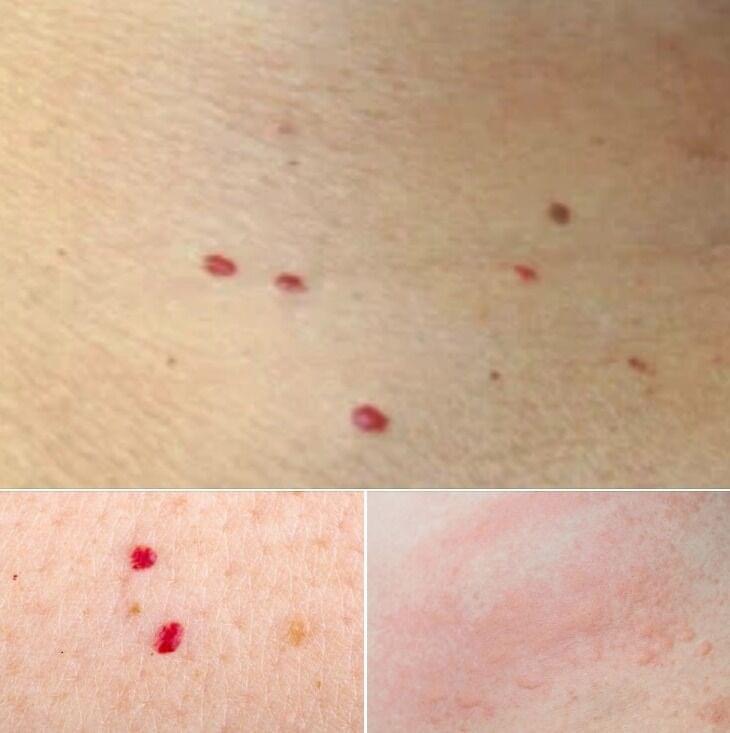5. Atopic Dermatitis (Eczema)

Red spots may result from chronic skin conditions like atopic dermatitis (eczema), causing itchy, scaly rashes, often in skin folds. It’s prevalent in children under 5 and diagnosed through a physical exam.
Treatment involves topical steroids, antihistamines, or oral steroids for severe cases. Keeping the skin moisturized is recommended to minimize flare-ups. Hot or long showers and irritating skincare products can exacerbate redness and itchiness in people with eczema.
6. Drug Rash

Red spots on the skin may result from allergens, like drug rashes triggered by medication allergies. These reactions can manifest as hives, rashes, or blisters, ranging from mild to severe. Emergency care may be necessary in severe cases.
The rash can affect the entire body or a specific area, often requiring a healthcare provider’s assessment. Discontinuing the medication may not always resolve the issue, prompting the use of treatments like steroids or antihistamines for relief from swelling and pain.
7. Pityriasis Rosea

Kids and teens may develop red spots due to pityriasis rosea, a common, benign rash affecting adolescents. It starts with a larger red spot on the chest, torso, or back, followed by smaller ring-shaped, scaly, and itchy spots.
The cause of pityriasis rosea is uncertain, but it’s associated with viral or bacterial infections, often appearing post-infection. Symptoms may include headache, sore throat, and fever. Diagnosis is usually based on appearance, and the rash may resolve on its own in six to eight weeks. Treatment options include steroids, antihistamines, or antiviral drugs to alleviate itching and swelling.
CONTINUE READING NEXT PAGE
ADVERTISEMENT

